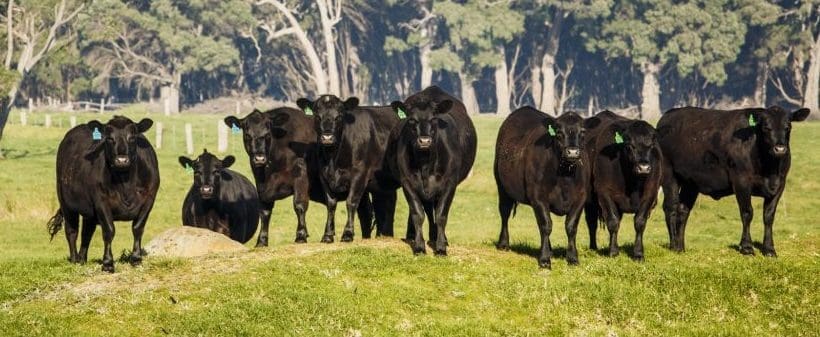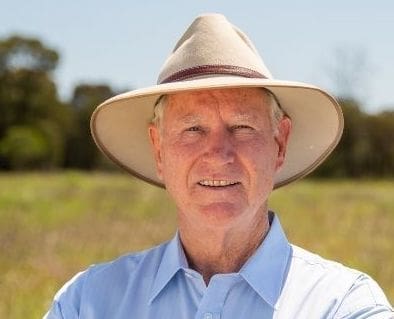INSETTING has emerged as a new term in the carbon market in recent years as food service, meat processing and the livestock industry set ambitious targets to eliminate emissions from their supply chains.
As the name suggests, carbon insetting is the direct opposite of carbon offsetting – it refers to a company implementing methods to reduce emissions internally. Carbon offsetting is when a company looks to reduce its emissions footprint by purchasing credits externally to offset its own emissions.
It is not possible to do both with one credit, as they are publicly registered and can only be used once.
But there appears to be demand for both practices as many food service companies and processors have stated their intentions to decarbonise supply chains, which may rely on producers insetting instead of selling them as offsets.
While many are yet to make a clear pricing structure, well-known carbon service provider Terry McCosker said low carbon beef was likely to come at a cost to producers.
“I have done some calculations on one of our properties and I believe it would cost supply chains $2.77/kg liveweight more to overcome the opportunity cost of selling the ACCUs,” Mr McCosker said.
“It varies from property-to-property, but they would at least demand more than $1/kg to keep credits within their business.
“In the example above, insetting 700 ACCUs to become carbon neutral would have a cash cost of $31,500 to a producer, at $45/ACCU, which may be an advantage to the supply chain at the consumer end. However, it does not help the supply chain pay for its efforts to decarbonise.”
Potential for producers to do both
Mr McCosker is the chair of Carbon Link, which has a series of projects currently going through the auditing process of the Clean Energy Regulator awaiting the issuance of ACCUs. He said the projects they were undertaking were showing production to be significantly carbon negative.
“Every thousand kg of animals these guys have run over the past five years has drawn down an average of nine tonnes of CO2 after accounting for emissions,” he said.
“This makes well managed livestock a significant contributor to removing CO2 from the atmosphere, contrary to the popular narrative which focuses on their emissions.”
Mr McCosker said if producers were forced to inset, there was still potential to sell credits.
“Livestock producers have the potential to create credits beyond their own requirements,” he said.
“For example, a livestock producer may sequester the equivalent of 10,000t of Carbon dioxide with emissions of 700t per annum. Therefore, they could retire 700 ACCUs (1 ACCU = 1 t CO2) and become carbon neutral. The 700 ACCUs would be insetting. They could then sell 9,300 ACCUs to another organisation.”
Significant growth expected in ACCU market
In-terms of selling offsets, the market for Australian Carbon Credit Units has been hovering between $30 and $40 for the past six months – it started this week at $37.50, according to market information service Jarden.
There are premiums on certain carbon credits, with savanna burning known to earn the most, human induced regeneration in the middle and generic ACCUs, like landfill gas, earning the least.
The market is relatively untested for soil carbon credits, with only one project being allocated ACCUs since it began. Microsoft purchased some soil carbon credits using an American crediting scheme in 2019.
Overall, demand for ACCUs is expected to increase significantly in the next 10 years with companies needing to comply with the Federal Government’s updated safeguard mechanism regulations expected to take up most of that demand.
The Federal Government has put a $75 cap on the carbon price over the next two years – many are divided on whether it will actually reach that price.
A lot of carbon credits are expected to become available in the next 10 years, with the previous Coalition Government allowing project-holders to exit government contracts and sell on the open market. More methodologies are expected to become available to make it easier to start projects.
However, government decisions and media reports have also proven to have an impact carbon price in the past two years.
Is there an appetite for meat supply chains to pay?
So far, most of the companies selling carbon neutral beef have had to purchase carbon credits from outside the supply chain to reach the goal – a practice they say would be hard to replicate on a large scale.
A Beef Central story last year suggested there was not much appetite from consumers to pay a premium for a carbon claim. Supply chains have made similar comments in the past year.
Many, including well-known academic Richard Eckard, say that insetting is more about maintaining market access than attracting a premium – referencing the many targets the food service and meat processing industries have set.
Some of the main targets include:
- JBS planning to have net zero greenhouse gas emissions in its global supply chain by 2040,
- Coles planning to be net zero by 2050
- Woolworths planning committed to achieving a 19pc reduction in value chain emissions by 2030
- The red meat industry CN30 or carbon neutral by 2030 target, which has been supported by many companies.
Focus should be more on sequestration
Mr McCosker said he was expecting a lot “chickens will come home to roost” on some of the beef industry’s carbon-based targets.
“Supply chains are telling us they can’t increase the price of hamburgers and ‘we can’t afford to buy credits’ – they will probably buy beef from someone who makes up a story,” he said.
“There is a lot of promises being made without any idea of what it is going to take to honour those promises.”
Mr McCosker said the focus on livestock-related methane emissions was misguided and should be more focused on sequestration.
“The results we are getting, when you look at sequestration and emissions, tells a very different story to what you hear about livestock,” he said.
“The average emissions as a percentage of sequestration is about 7.8pc. If we took livestock away a lot of the sequestration would stop because livestock, through manure and management, speed up sequestration. And there would still be a baseline level of emissions, with fire and other animals eating the pasture.
“A lot of it is to do with terminology because their product is carbon negative. The amount of carbon they have sequestered far exceeds the amount that is represented in ACCUs.”





HAVE YOUR SAY